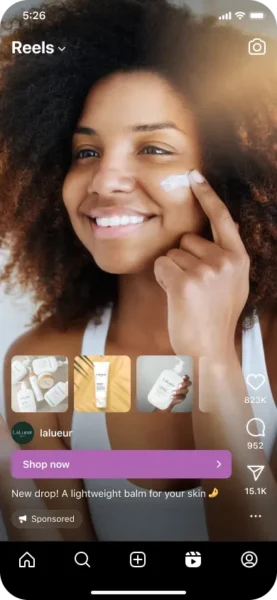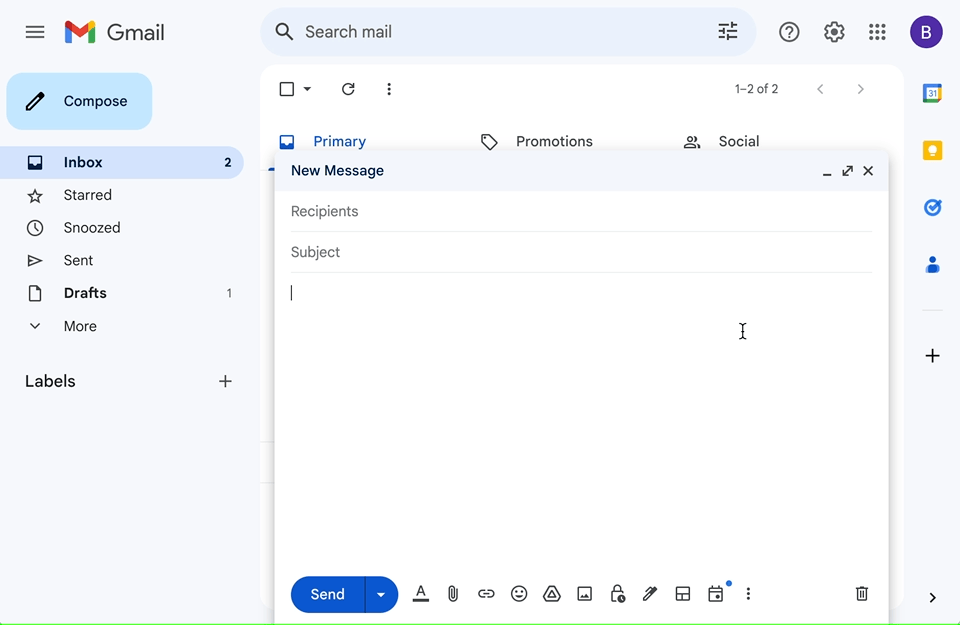- Today in Digital Marketing
- Posts
- Google’s ‘Core Web Vitals’ Flip-Flop
Google’s ‘Core Web Vitals’ Flip-Flop
First, Google said these primary web experience metrics don’t affect your brand’s search ranking. Now, it says they do. Uhh... we think. This week. Maybe.

Google’s ‘Core Web Vitals’ Flip-Flop
First, Google said these primary web experience metrics don’t affect your brand’s search ranking. Now, it says they do. Uhh… we think. This week. Maybe.
by Tod Maffin (LinkedIn • all social media)

Reach 4,000+ marketing decision-makers for just $7!
More Info • Contact Us
Today's News:
SEARCH • Core Web Vitals Matter to Search (Maybe)

Google hasn’t always the most clear when it comes to telling us what, specifically, matters when it comes to search engine ranking. And perhaps for good reason — make it too detailed, and the spammers will exploit it.
And while they do share the guidelines document they give to their human reviewers, those people’s job is to help give feedback to the algorithm, not to turn up or down specific results.
As a result, Google has played somewhat coy with the things we marketers can control about our web pages.
One example: Whether the Core Web Vitals affect your brand’s web site ranking in Search or not. The Core Web Vitals are a set of web measurements that track how good the overall user experience is: Does it load fast, can people interact with it fast, does the layout jump around too much… that sort of thing.
But when asked directly whether improving your Core Web Vitals score will improve your rankings, Google reps have usually blanketed their responses with vague distinctions, like it might improve the system, but not the ranking; the signals, but not the results, and so on.
Even as recently as last month, and as we covered back then, Google said:
“We don’t confirm any of the things [page experience or core web vitals] as a direct ranking factor…”
Now, they’ve come a little closer to confirm what I think most marketers and SEO professionals have assumed all along — Core Web Vitals do affect the results of individual pages.
Google this week updated its Search documentation to read:
What aspects of page experience are used in ranking?
Core Web Vitals are used by our ranking systems.
We recommend site owners achieve good Core Web Vitals for success with Search and to ensure a great user experience generally.
Beyond Core Web Vitals, other page experience aspects don't directly help your website rank higher in search results. However, they can make your website more satisfying to use, which is generally aligned with what our ranking systems seek to reward.
This section replaces one which was a little more wishy-washy. The previous version of this read:
What aspects of page experience are used in rankings?
There are many aspects to page experience, including some listed on this page. While not all aspects may be directly used to inform ranking, they do generally align with success in search ranking and are worth attention.
Google search analyst John Mueller went a little further on LinkedIn:
Yes! Google Search does use Core Web Vitals for Search.
However … it's not worth over-focusing on tweaking the scores just for SEO.
I know, it's rare that you can measure something more or less objectively for SEO, but don't let it get to your head. You don't need to obsess over each fractional point there.
A perfect score is a fun technical challenge, and you'll learn something along the way, I know the feeling (I worked on mine too), but it's not going to make your site's rankings jump up.
One funny side note, the SEO community noticed this week that John Mueller’s own web site has apparently been delisted in the search index.

.@JohnMu FYI, your website got completely deindexed in Google. It seems Google went crazy 😱
H/T @seb_skowron & @ziptiedev
— Tomek Rudzki (@TomekRudzki)
1:49 PM • Mar 13, 2024
Mueller hasn’t said what’s going on, if he even knows, but has responded to some of these reports with memes and one-liners.
META • Advantage+ and Shopping Campaign Updates

Meta this week updated its Advantage+ and Shopping campaigns.
Here’s what’s new:
Automatic optimizations will crop video ads to fit Reels or the mobile Facebook and Instagram apps with a 9:16 aspect ratio. This is under the Advantage+ umbrella meaning it might kick in automatically.
Advantage+ catalog ads can now include branded videos or customer demonstrations instead of static images. And all global advertisers can now use dynamic and personalized videos.

Hero images in catalog ads are in place now, letting you upload a main image to the center of your Advantage+ catalog ads. Meta will then dynamically show people the best products from their catalog to drive performance.

Reminder ads can now incorporate external links to new products or sales, which might help convert interest into purchases. Also, this summer, Meta will give us an option to notify users when an event begins and before it ends. Meta also plans to extend Reminder ads to Reels.
Meta is also globally introducing alphanumeric promo codes in Facebook and Instagram ads. According to the company, advertisers who used this in the testing phase saw about a 9% drop in cost per purchase, and about a 10% increase in conversions. As always, take these numbers with a grain of salt, because Meta doesn’t usually report any study results that aren’t positive.
Later month, Meta will introduce ads with product tags to the Facebook Feed — currently they’re only available on Instagram. Next month, they’ll roll out ads with product tags for all businesses globally, even if they don’t have a Shop.

There is a Collaborative ads update with more insights into performance, and Meta says it’s testing letting advertisers use Collaborative ads in conjunction with Advantage+ shopping campaigns.
Today’s Trivia — Guess and Win!
Each month, we pick someone who guesses in a trivia question and comp them the Premium Newsletter! Just click on any option below:
How many creative combinations can Advantage+ Shopping campaigns automate at once? |
TIKTOK • Better Ads Data Despite Apple’s Lockdown

TikTok added an updated SKAdNetwork framework into TikTok Ads Manager.
This is a somewhat technical thing, but essentially provides better measurement of campaigns, despite the privacy limitations set on Apple devices.
The framework groups privacy thresholds into four tiers, and each tier has a different level of reporting detail that shows up on TikTok’s ads platform.
It will give advertisers longer attribution windows — they can be 2, 7, or 35 days, and some better reporting like real-time data and estimated lifetime value.
SKAdNetwork enables anonymized performance tracking, built into Apple’s app network, so you can still gather campaign performance feedback from the system, even with users switching off full tracking…
It’s not the same level of insight that you had previously, but it’s better than nothing, and it will better inform your overall campaign approach.
And it can improve performance.
TikTok says that adopting SKAN 4.0 on TikTok has resulted in lower cost per acquisition and higher conversion rates for many partners.
Also, while we’re here, American House legislators yesterday passed a bipartisan bill to ban TikTok from the U.S. unless its Chinese owners sell it to an American group. The vote was not unanimous, and it now heads to the U.S. Senate, where experts say it might receive a bumpier ride.
|
SEARCH • New AI Results Bad News for Web Sites

News publishers across the web say Google’s new Search Generative Experience could cut their organic traffic by more than half.
Search Generative Experience is Google’s insertion of AI into the search results. It’s similar to the zero-click strategy adopted years ago, where Google would try to answer a question at the top of the page, instead of just providing a list of links that might have the answer in them.
It was great for users, but meant they didn’t have to click to a web site to find the answer. Fewer clicks means fewer visits, means worse numbers to show advertisers interested in running campaigns on those sites. Or, for merchants, fewer opportunities to get people on their site to cookie them or sell them something.
SGE uses AI to try to come up with a more detailed answer. Search for “baby shower ideas” and Google’s AI will give you a list of ideas, up higher in the results page than blog posts which are trying to optimize for that result.
One report today in AdWeek quotes an executive at Raptive, which manages ad sales for web publishers, as saying SGE could translate to an annual ad revenue loss of up to $2 billion across the industry. Travel and family sites expected to be the hardest hit.
An analysis found an 18% to 64% traffic drop across 23 technology websites…
Publishers are exploring various responses, from licensing content to AI firms like OpenAI, to suing for the unauthorized use of their material. Others, like Money.com, are tweaking their websites to better fit into SGE's format, hoping to capture more traffic.
The shift to SGE also raises questions about the future of ad placement and revenue.
With SGE pushing ads to the bottom of responses, the traditional top-spot ads may see less engagement, potentially affecting Google's bottom line and, by extension, the visibility of SGE results for certain queries.
INSTAGRAM • Another Way to Jump Into Viral Trends

Instagram is testing a new Reels feature called “Spins,” which could juice your brand account’s engagement.
So far, from reverse engineering, it seems like users would be able to remix your Reels posts with alternate audio or text blocks.

If this sounds familiar, it might be because this is somewhat similar to those meme creator web apps that let you overlay bold text over someone else’s image.

Of course, this extends to your social media team too — they could slap new audio or text on a post that’s going viral, to try to get in on the attention.
Again, this appears to only be in testing for now.
Also, apparently being worked on: The ability to send files in DMs.

This isn’t a big surprise — Meta has for a couple of years now said they want to merge Facebook, Instagram, and WhatsApp messaging into a single platform.
No word on when either of these would launch.
EMAIL • Google to Launch Email Newsletter Templates

Google apparently wants to be Mailchimp.
Today, the company said they’re launching an email campaign builder right inside the Gmail version they sell to organizations.
Google Workspace editions can now create customized email layouts using a new email layout editor that is accessible from the compose screen in Gmail or Google Drive.
In the layout editor, you can create a new email layout from scratch or select from a predefined set of email templates, which include images, text elements and buttons.
You can then customize these templates by placing elements such as color schemes, logos, images, footer text and links wherever you’d like. You can also share a layout file directly from the email layout editor using the Share button.

It’s a pretty simple builder — if you’ve seen the UI of Google Sites, you’ll recognize it.
To be honest, I don’t know that I’ve heard of a single instance of a brand sending mass emails from a corporate Gmail account. I don’t know, maybe Google has a way of detecting the good ones from the bad, but that sounds like a path straight to spam.
Plus, this lacks the one thing marketers really care about: Performance metrics.
Either way, though, you’ll be able to access custom email layouts in Gmail from the layout icon in your Compose toolbar.

This will start to roll out in a couple of weeks, and should be to most corporate plans by the end of next month.
Need more detail?
Read more about the stories we covered today.
What did you think of today's issue? |
Get free stuff for referring friends and family 🎁
1 referral = Tod’s “How to Go Viral” keynote speech 🗣️
2 referrals = One Month Free of the Premium Podcast 🎙️
3 referrals = Access to Private Slack Channel 🔓
You currently have 0 referrals, only 1 away from receiving Tod's Keynote: "How to Go Viral".
Copy and share ⇨ this link ⇦
Reach thousands of marketing executives for as low as $7! [learn more]
Upgrade Your Media Buying Skills: | Tools We Use and Recommend: |
¹ Some links in this newsletter may provide affiliate revenue to us.


Reply